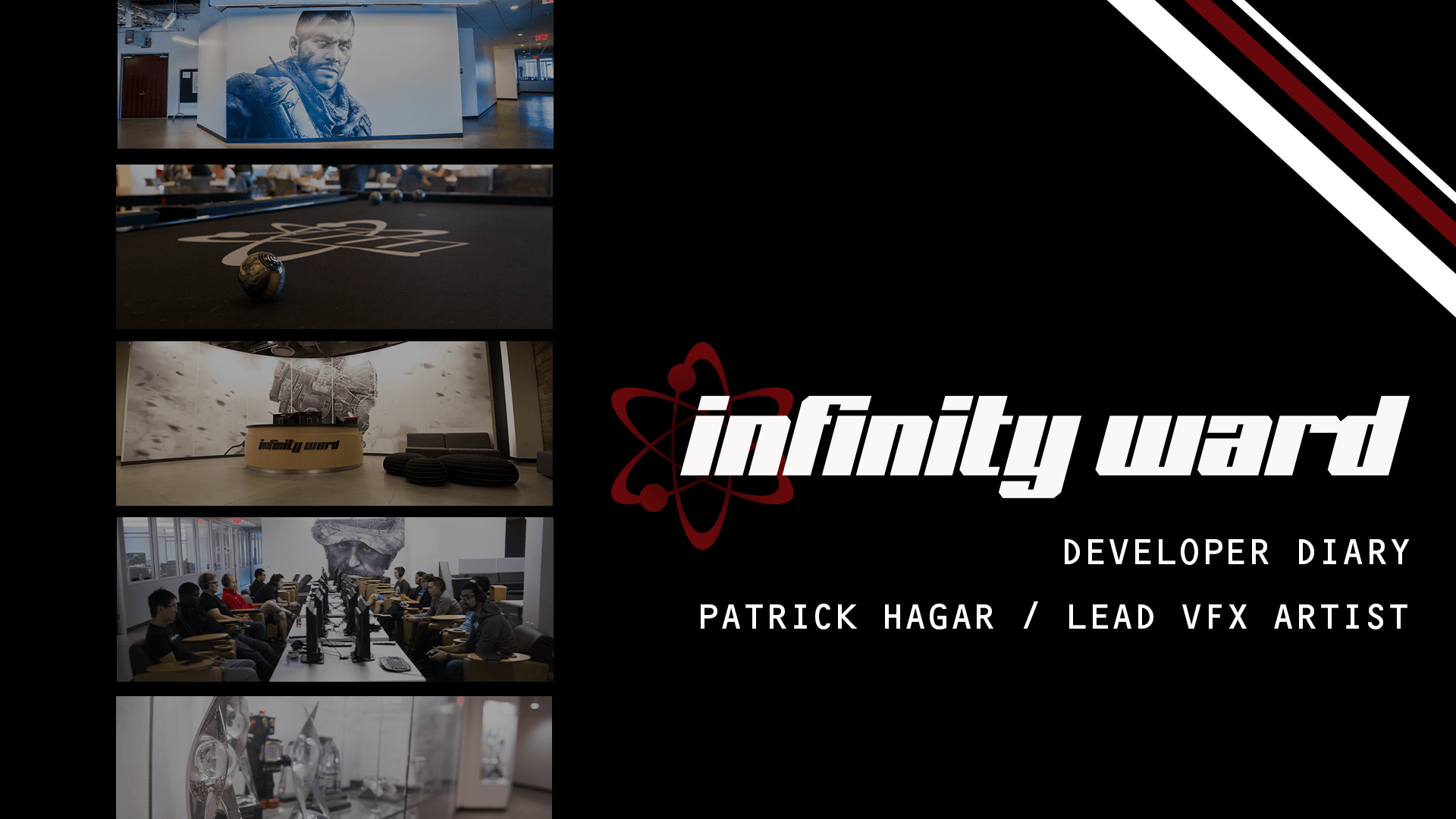This week, we have a chance to hear from Patrick Hagar, Lead VFX Artist. With a focus on the campaign, he's responsible for building and coordinating the FX from the biggest dramatic scenes to smaller ambient FX that are rooted in realism. Continue reading to learn more about his journey through game development from Environment / Prop Artist to Lead VFX Artist.
-_-_-_-_-_-_-_-_-_-_-_-_-_-_-_-_-_-_-_-_-_-_-_-_-_-_-_-_-_-_-_-_-_-_-_-_-_-_-_-_-_-_-_-_-_-_-_-_-_-_-_-_-_-_-_-_-_-_-_-_
Who are you? What do you do @ IW?
My name is Patrick Hagar and I’m the Lead VFX Artist for single player/campaign. I help coordinate, direct, and create all kinds of FX from big set-piece moments to ambient FX that give the levels atmosphere, motion, and drama. We have a great VFX team here at IW and we all work together to try and make the best VFX in games possible.
When did you join IW? What did you do beforehand?
I joined IW in 2014 after Neversoft merged with IW. Before that I worked for Neversoft for 9 years first as an Environment Artist, and then as a Technical/VFX Artist. At Neversoft I worked on Tony Hawk and Guitar Hero. My first job in the industry was at Luxoflux, working as an Environment/Prop Artist on True Crime: New York City. My boss at Luxoflux was a guy named Nick Marks, who was my teacher at the Art Institute in Santa Monica. Nick is a legend who has influenced and inspired many game artists who are working in the industry today.
What do you like to do outside of the studio in your free time?
I like to spend time with my family, read, play games, make music, go camping, shooting (good reference!), travel, and to cook.
Tell us about a recent piece of work you are most proud of.
Recently I worked on the white phosphorus strike FX at the beginning of the single player game for the "Fog of War" mission, the explosion at the beginning of the "Hometown" mission, ambient FX for "Proxy War" and "Clean House", etc.
What advice would you give to someone wanting to get into VFX?
Study real life-look at videos of explosions, fire, and smoke, and try to break them down into separate elements that can be recreated with particles. We use particles with animated textures for 95% of what we do. Also study FX in current games try to pick apart how they are built, and what looks good (or not) about them. Get used to using particle editors in Unreal or Unity. Learn the basics of modeling and texturing, and making textures. Learn a 3D app like Maya, 3ds Max, and/or Houdini, and learn how to use Photoshop well. Making 3D art has a lot in common with making 2D art - studying master painters, matte painters, and illustrators can help give a sense of what good composition, color palettes, and values look like.
What do you know about working in games now, that you wish you knew before?
You don't need to go to Game Art school and get yourself in a lot of debt to get a job as an artist in the industry. What matters most is the quality of your work and your attitude. Who you know helps. There's a wealth of learning materials on-line now, free learning versions of software, etc. Once you feel you have something worth getting feedback on post it online. Be open to constructive criticism. Good and promising work can get noticed by potential employers and get your name out there.


